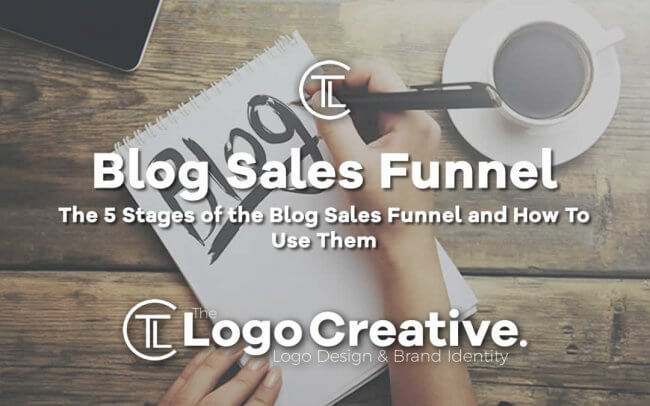If you’ve been in the digital marketing world for a while now, you’ve heard the term “sales funnel” tossed around like the most important part of your marketing campaign. It’s used by online selling “gurus” in those spammy Facebook ads claiming your sales funnel is the key to passive income. It’s used by the big-name agencies trying to sell you something. In this article, we explain The 5 Stages of the Blog Sales Funnel and How To Use Them.
Table of Contents
5 Stages of the Blog Sales Funnel and How To Use Them
At the end of the day, you have to ask yourself if the sales funnel is really worth the hype? Is this really the passive income formula it claims to be? In reality, sales funnels are as important as those online gurus make them sound.
That being said, creating a winning sales funnel is hardly as easy as those “gurus” would have you believe. If you fail to create a strong sales funnel, you’ll also fail to make any money. However, you can’t just throw together a sequence and call it a day.
You need to be targeted and intentional with your sales funnel. You need at least 5 stages to do that with your blog, and that’s what we’re going to explore in this guide today. Keep reading to learn the 5 stages of the blog sales funnel and how to use them effectively.

What is a Sales Funnel?
Before we even get into the stages, we need to talk about what a sales funnel even is. Even if you have an idea already, it’s still worth going over the definition in a clear way. A sales funnel is a marketing concept in which you map out the customer journey.
Your goal with this funnel is to guide your target users through this journey. Take them from first discovering your content to making a purchase.
Only a fraction of those who start at the top of your funnel will make it to the final stage, and that’s okay. That’s why there are so many stages, so you can identify your winning customers that are the best fit for you.
Here are a few basic stages of any sales funnel that you need to know about:
- Awareness
- Interest
- Decision
- Action
For blogging in particular, you’ll need to focus on that interest and decision. There are a startling 2 million blog posts being published daily. How will you stand out? How will you keep users coming back to your website? More importantly, how will you convert users into customers? That’s what the 5 stages below are for.
Stage 1: High-Quality Content
As a blogger, your first goal needs to be to create high-quality content that drives action. If you can’t attract users to your website in the first place, the other stages are irrelevant. The type of content you produce will depend on your audience, but make sure it’s something that provides value.
You need to establish yourself as an authority while casting a wide net. Let’s say you blog about Human Resources. With this example, you’ll want to create content that appeals to HR professionals, hiring managers, and businesses. You may highlight the latest trends, best practices, and so on.
See how these are things that offer value? Once you’ve offered real value, you’re building credibility. Now that you have your user’s attention, you’re ready to move to the next stage.
For example, Hubspot’s marketing blog writes high-quality, longform content to attract readers to their audience and build trust.

Stage 2: Lead Magnet
Next, you need to offer users something to make them take action. What is that action? Do you want them to join your email list? Your email list matters. This is how you’re going to continue to connect with these interested users even after they’ve clicked away from your website.
Today, 81% of small to midsize businesses rely on email as their primary customer acquisition channel. But users aren’t just willing to give out their email addresses for kicks and giggles. There has to be something in it for them, and this is where the lead magnet comes in.
A lead magnet is anything you offer users in exchange for email signup. It can be an ebook, a downloadable guide, a webinar, or even a discount. It’s a small freebie that will appeal to your audience, and it’s how you’ll capture new leads. Once you’ve created a lead magnet and encouraged sign-ups, you’re ready for the next stage.
In the example below, see how Hubspot entices users with their own lead magnet. They offer 6 free blog post templates to help new bloggers write better posts.

Stage 3: Interest
Now you know your potential customer is interested in your blog and your product. They signed up for your email list, after all, so they want to hear more from you. This is the most important part of your marketing campaign since you have their attention, and now you need to keep it.
This is where you build interest. Resist selling at this stage since you don’t want to come across as a pushy salesman. Instead, demonstrate more value. Share your top posts, introduce yourself, and share customer stories. This is where you educate your audience to push them closer to a sale.
You may offer a small offer at this stage but focus on building interest. You can offer another freebie, like an additional download, content, or webinars. You’re posing up for the big sell in the next stage.
Stage 4: Hard Sell
Your audience has officially warmed up, and it’s time to hit them with the real sell. This is your initial offer, so make sure it’s a good one. As a general rule of thumb, this offer should be lower in price point, provide real value, and be an opportunity to continue selling.
This isn’t the time to upsell or try to get this prospect to buy every product you have. Start with one clear action. We’ll worry about the follow up later.
A good idea to learn just what you should offer and how you should price your offering is with a cost assessment. Your initial offer should cover the cost of the acquisition, but it should still be too good to pass up.
In the example below, see how HerConference encourages email subscribers to sign up for an event by offering the biggest discount yet.

Stage 5: Follow Up
In sales funnels in the past, the funnel would end once a customer made a purchase. This isn’t the case today, and you can leverage past customers for both referrals and repeat business. In fact, it can cost up to five times as much to attract new customers compared to retaining existing ones.
In the follow-up stage, you have a lot of options. You can offer an additional product or upsell. You can share other customer reviews and stories, and you can ask for some in return.
Consider personalizing these follow ups. Based your recommendations on what users have purchased in the past will help you gain that repeat business. Once you have people continuously engaging with your content, you have a strong list to continue selling to again and again.
In our last example, Jordan Roper of Creative Revolt connects with existing customers via email to encourage them to re-engage with her content through her YouTube videos.

Conclusion
Will every user make it to stage 5 of your funnels? Definition not. There’s no set limit to how much or how little you can earn with a sales funnel, but it’s a highly automated process that lessens the amount of selling you have to personally do as a blog owner.
Bloggers have been making money with sales funnels since the dawn of the internet. Now it’s up to you to leverage this 5 stage funnel for your own blog. All you need to get started is quality content and a product to offer.
As content marketing continues to evolve, so will the sales funnel. Once you set up and optimize your sales funnel, you’re free to leave it alone to focus on other areas of your business. Who doesn’t want to make money in the background? There’s nothing to lose, so get started today to see how far your funnel will go.
Hope you found this article about The 5 Stages of the Blog Sales Funnel and How To Use Them helpful and be sure to leave any comments below. Thanks for reading!
Useful Links & Great Deals
- The Equipment We Use & Recommend
- Quality Design Bundles
- Get 2 Months free Skillshare
- Get an Exclusive 20% off Logo Package Express
- Learn Logo Design Online
 Author Bio
Author Bio
Ashley Lipman is an award-winning writer who discovered her passion for providing creative solutions for building brands online. Since her first high school award in Creative Writing, she continues to deliver awesome content through various niches.


